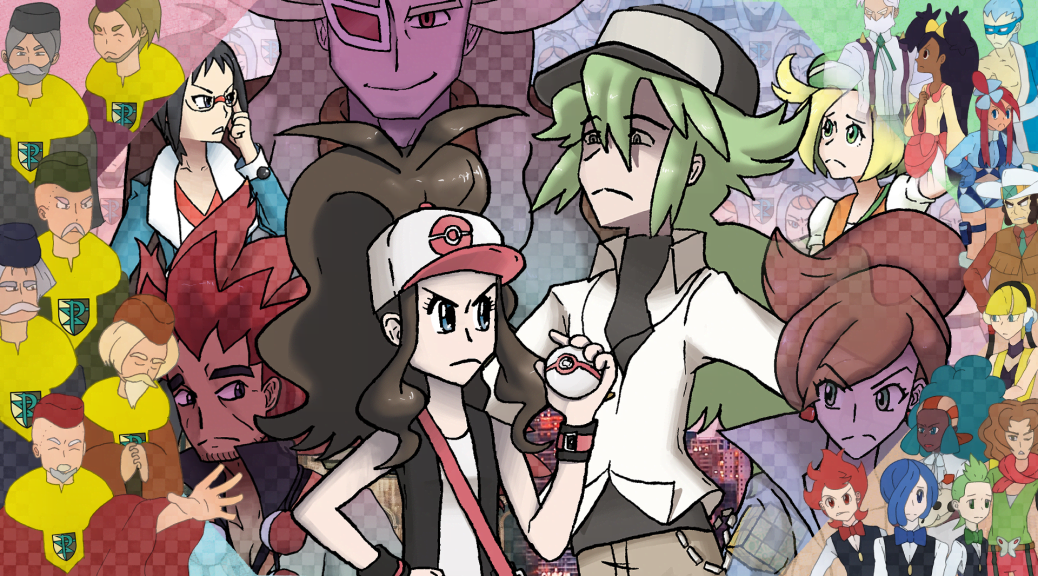Part I: The Components of Unova
For the anniversary of the release of Pokémon Black and White, we release our tribute to the games. Part I focuses on gameplay and other mechanics, as well as their themes.

Part I: The Components of Unova
Hexagons | Adventure | Dreams | Seasons
Discovery | Myths | Sprites | Music | Accessibility
The Myths of Unova: The Perfect Unity of Integration
Unova is home to four Mythical Pokémon—legendary Pokémon only obtainable through special events rather than through normal gameplay. Starting with X and Y, these special Pokémon are mostly detached from the lore and locales of their games, and are uneventfully obtained from an assistant within the Pokémon Center, usually at Level 50 or 100. Prior to the Nintendo 3DS titles, however, Mythical Pokémon had more of an impact on their worlds in spite of their elusiveness. For instance, Kanto’s own Mew is mentioned in the Pokémon Mansion journals even if the player never comes across a distribution event for one, and the people of Johto mention a protector of the Ilex Forest, even if its shrine remains inactive, the Mythical Celebi hidden away.
 Starting with the third generation of Pokémon games, Mythical Pokémon began receiving their own special locations that could only be accessed through their associated events. One such example is the barren but delta-shaped Birth Island, only accessible in FireRed, LeafGreen, and Emerald after obtaining the event-exclusive AuroraTicket item. Here the mysterious Deoxys can be battled and potentially captured. This continued with the fourth generation games, with special locations and even notable dialog associated with events such as the Diamond, Pearl, and Platinum Member Card event that takes players to Newmoon Island to find Darkrai.
Starting with the third generation of Pokémon games, Mythical Pokémon began receiving their own special locations that could only be accessed through their associated events. One such example is the barren but delta-shaped Birth Island, only accessible in FireRed, LeafGreen, and Emerald after obtaining the event-exclusive AuroraTicket item. Here the mysterious Deoxys can be battled and potentially captured. This continued with the fourth generation games, with special locations and even notable dialog associated with events such as the Diamond, Pearl, and Platinum Member Card event that takes players to Newmoon Island to find Darkrai.
In what can be considered both a throwback to the original games as well as building upon the series’s modernizations, Black and White have locations that are always accessible but activate special in-game events when the proper Mythical Pokémon is brought there. These places aren’t off-limits to players who can’t access the events for whatever reason. Unlike in Diamond, Pearl, and Platinum, where players can’t see event locations on repeat playthroughs under normal circumstances, locations in Black and White such as the Moor of Icirrus and the P2 Laboratory are always available for the player to access. In some cases, such as the P2 Laboratory or the Café Sonata, these sites will offer hints at the lore behind the associated Mythical Pokémon even before the player activates the event proper, giving them extra reason to exist.
These places also subsist more naturally within the region itself precisely because they’re an inherent part of it, rather than being far-off islands barely connected to their region, accessible only through a boat that already conveniently exists to take the player from one city to another. While some may look at locations such as the Moor of Icirrus and scoff that it has no reason to be separate from Route 8, the reality is these places are the equivalent of sites such as Flower Paradise and Sinjoh Ruins. But due to their direct inclusion within Unova, they are better able to not only flesh out the region, but also incorporate their legends even without the event Pokémon, similar to the Ilex Forest shrine or the Pokémon Mansion journals. They may even have their own regular wild Pokémon to encounter, Trainers to battle, or items to find like the rest of the region. Newmoon Island looks really cool, but there’s nothing there save for Darkrai—and if you were to go there without access to Darkrai, it wouldn’t be long before you left out of boredom. P2 Laboratory may seem unassuming, but there are wild Pokémon to catch, a Trainer to fight, and hints at some behind-the-scenes scheming involving Team Plasma. Inspecting the side of the computer brings your attention to a memo pasted there. It reads, “My lord N apparently rejected my research… But my research is necessary for Team Plasma to reach its goal… The strongest Pokémon…” The rest of the memo is torn off. But if you bring a Genesect to this location, you’ll find someone has already entered the building ahead of you, checking something on the computer.
 The man in a lab coat notices you and explains that he’s part of Team Plasma, and that Team Plasma revived Genesect from a fossil and scientifically enhanced it. The man proclaims that Genesect “is the strongest Pokémon in history,” which no doubt references Kanto’s Mewtwo. Because Black and White intentionally draw parallels to the first-ever Pokémon games, the Genesect event takes the opportunity to do something that Mewtwo, in-game, has not, despite numerous Kanto game remakes: it explores the ethics of the genetic modification of Pokémon.
The man in a lab coat notices you and explains that he’s part of Team Plasma, and that Team Plasma revived Genesect from a fossil and scientifically enhanced it. The man proclaims that Genesect “is the strongest Pokémon in history,” which no doubt references Kanto’s Mewtwo. Because Black and White intentionally draw parallels to the first-ever Pokémon games, the Genesect event takes the opportunity to do something that Mewtwo, in-game, has not, despite numerous Kanto game remakes: it explores the ethics of the genetic modification of Pokémon.
While the movie Mewtwo Strikes Back goes more in-depth with Mewtwo’s backstory, it’s still notably different than the games and as such explores different ideas. In the movie, Mewtwo is a test-tube baby having an existential crisis due to the nature of its “birth,” made dangerous due to its strength. In the games, however, Mewtwo is Mew’s child—literally—who was kidnapped by researchers and experimented on. Rather than having an existential crisis, Mewtwo hosts limitless anger at having been abused, again exemplified by its strength. But the games don’t make any effort to use this lore in any meaningful way.
Genesect’s event is short, but by tying it directly to Team Plasma, players forced to ask if such experimentation and modification is ethical. “Our lord N was not interested in this Genesect that was modified by the power of science,” the man explains to you. Apparently N told him that “Science damages the natural beauty of Pokémon” because “They’re perfect beings” as is. Even if you have a Genesect from the start of your adventure due to an event or trade, you can’t see this exchange until you can reach P2 Laboratory, which is after you get Surf. By then, you’re already well aware of N’s beliefs and mannerisms. Black and White’s events all cleverly utilize their locations’ placements in this way to make them more relevant not only to the region, but to the story at hand.
The man then explains that the research on Genesect was halted, and the facility closed down because of N’s disagreement. He challenges you to a battle with a Klink and Klang, and after you defeat him, he seems to come to his own conclusion on the situation.
“I forgot my duty as a Scientist is to make the world happy. … I’m going to wash my hands of this Genesect matter…” At this, he gives you two of the four “Drive” items—Shock and Burn in Black, or Douse and Chill in White—that you can equip on Genesect to change the type of its Techno Blast attack. Thus, you are left to consider his words. How can a scientist make the world happy by genetically modifying sentient creatures into weapons of destruction? Perhaps you may even wonder how Genesect feels about all this. The event encourages players to consider these points that have been brought up only in passing in past games. It also adds to the moral ambiguity of Team Plasma for having made Genesect as well as to the validity of their claims. If people and Pokémon were separated as N wishes, this never would have happened, after all. While you ponder, you may seek out other events throughout the region.
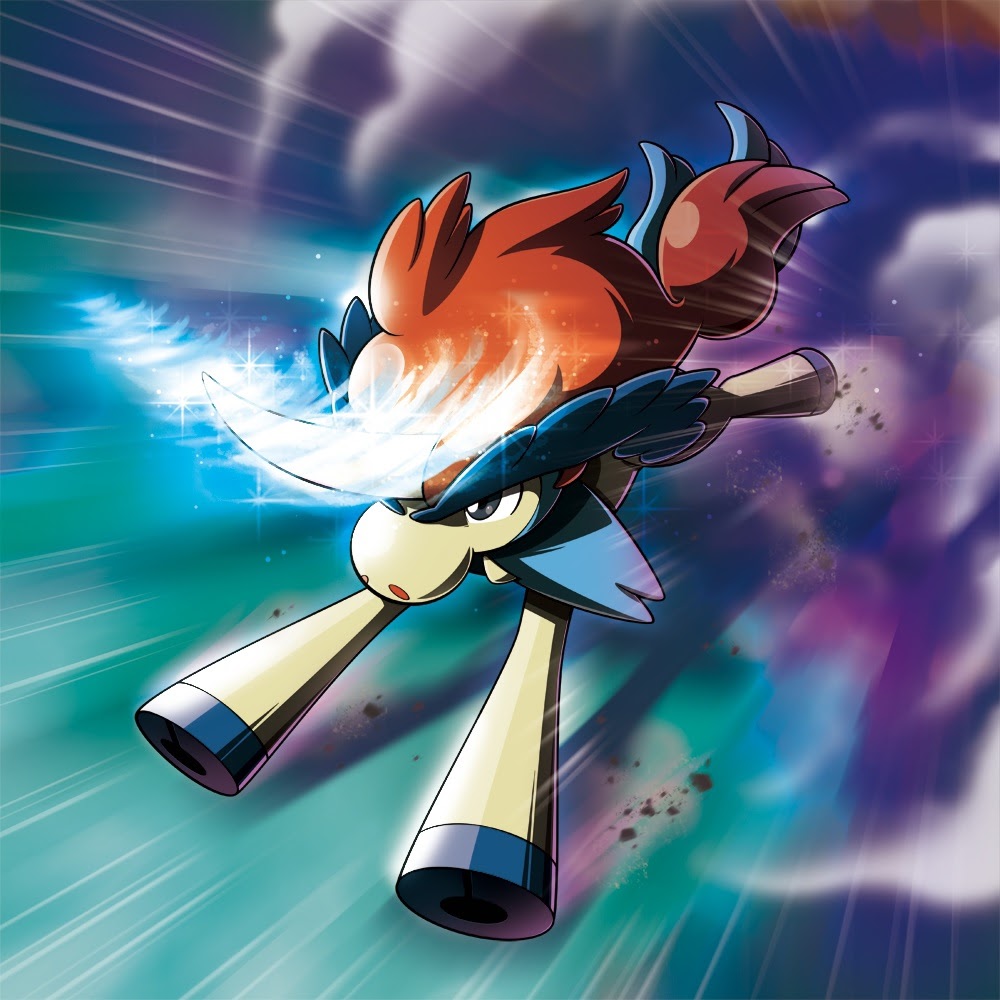
Returning to the Moor of Icirrus with a Keldeo in your party triggers a scene where you may allow the Colt Pokémon to leave its Poké Ball momentarily. In doing so, an old man—similar to the one who described the lore of Cobalion, Terrakion, and Virizion within Mistralton Cave—approaches and explains that the Moor is special to these Pokémon. This very forest is the one where a fire broke out when humans warred with each other. One Pokémon in particular was separated from its parents, and the three legendary Pokémon cared for it as their own. If you don’t have Keldeo’s three caretakers with you, the man insists that something special will happen if you bring them all together at the Moor. And indeed, reuniting the found family has the three parental figures try to teach Keldeo the exclusive move Secret Sword. It’s a simple sequence, but it intelligently continues the lore established by the in-game legendaries while revealing that the location from the lore is in fact a tangible part of the region rather than a conveniently unnamed and inaccessible locale.
The final event site is nestled deep within the back-alley Narrow Street of Castelia City—Café Sonata. While its orange brickwork stands out beside the city grays, it’s a rather unassuming place, with the only person of note being a melancholy man strumming his guitar. Bringing Meloetta here reignites his “sepia-toned memories,” reminding him of a song his mother once loved. As the man begins to play, Meloetta jumps out of its Poké Ball and begins to sing and dance, also having remembered the tune: Relic Song. This is a move only Meloetta can learn which, when used in battle, changes it between its two Formes, the Normal/Psychic singing-based Aria Forme and the Normal/Fighting dancing-based Pirouette Forme.
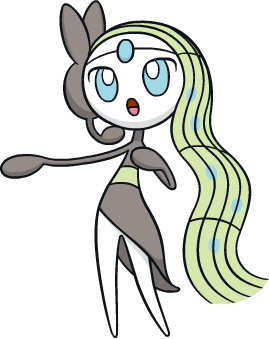 According to the man, when “sorrow darkened the entire world,” Meloetta forgot this ancient song. This subtly continues the worldbuilding surrounding humans indirectly harming Pokémon. Although the history with Keldeo and its caregivers is far more blatant, describing warring humans destroying Pokémon habitats, Meloetta was similarly affected by the misdeeds of people. War welcomes sadness and tragedy, so it’s not unlikely that the “sorrow” the man describes was beget by the numerous wars held throughout Unova’s history. Not only have humans physically harmed Pokémon and their homes with their fighting, but they’ve emotionally hurt them, too, causing Meloetta to forget its song.
According to the man, when “sorrow darkened the entire world,” Meloetta forgot this ancient song. This subtly continues the worldbuilding surrounding humans indirectly harming Pokémon. Although the history with Keldeo and its caregivers is far more blatant, describing warring humans destroying Pokémon habitats, Meloetta was similarly affected by the misdeeds of people. War welcomes sadness and tragedy, so it’s not unlikely that the “sorrow” the man describes was beget by the numerous wars held throughout Unova’s history. Not only have humans physically harmed Pokémon and their homes with their fighting, but they’ve emotionally hurt them, too, causing Meloetta to forget its song.
The unique attack itself also plays into some of the games’ underlying themes. Relic Song’s description reads: “The user sings an ancient song and attacks by appealing to the hearts of those listening.” Throughout the game, Ghetsis references appealing to the hearts of his audience, the emotional-based rhetorical strategy of implementing pathos. Relic Song goes so far as to reference the very nature of communication, utilizing a positive spin on touching peoples’ hearts compared to Ghetsis’s negative application.
These miniature situations are truly the best of both words. They take the unique approach of generations three and fours’ distinct event locations and combine it with the in-region approach of generations one and two, resulting in Mythical Pokémon that continue with Black and White’s strong emphasis on narrative cohesion, worldbuilding, and exploration. In fact, the only such event in which this is not the case—a singular event that is entirely inaccessible unless one has the proper event item—more than makes up for it through its themeing and in-depth story.
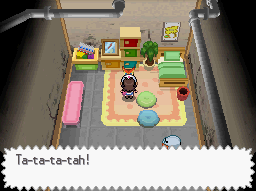
With the event-exclusive Liberty Pass, players can take the boat docked in Castelia City’s Liberty Pier. Upon landing in Liberty Garden, there’s a bit of a commotion. It appears Team Plasma Grunts have been sent to the island to pick up a Pokémon that rests within the island’s lighthouse, and those not inspecting the building have taken visitors as hostages.
Gathering information from the people outside reveals that the lighthouse was built and subsequently purchased 200 years ago by a very rich, unnamed person, who then hid away his Pokémon within the basement. This Pokémon is Victini, the Victory Pokémon. It’s said to emit a limitless energy with the power to make anyone exposed to it always victorious in battle of any kind—so, understandably, Team Plasma seeks it out for their own gain.
As you approach and enter the lighthouse, you challenge various grunts along the way. One male grunt says they want to “release Victini from its confinement,” and considers your interference as “sabotaging” their “noble cause.” While Team Plasma’s goals seem significantly less than noble thanks to its roots in their self-gain, they aren’t entirely wrong when they retort with, “Selfish people are making Victini suffer…” Not only is the selfish Team Plasma placing undue stress upon Victini, but who on earth would lock up a Pokémon underground for 200 years? Not only that, but Victini itself was almost lost to history and classified as “Mythical” due to its disappearance.
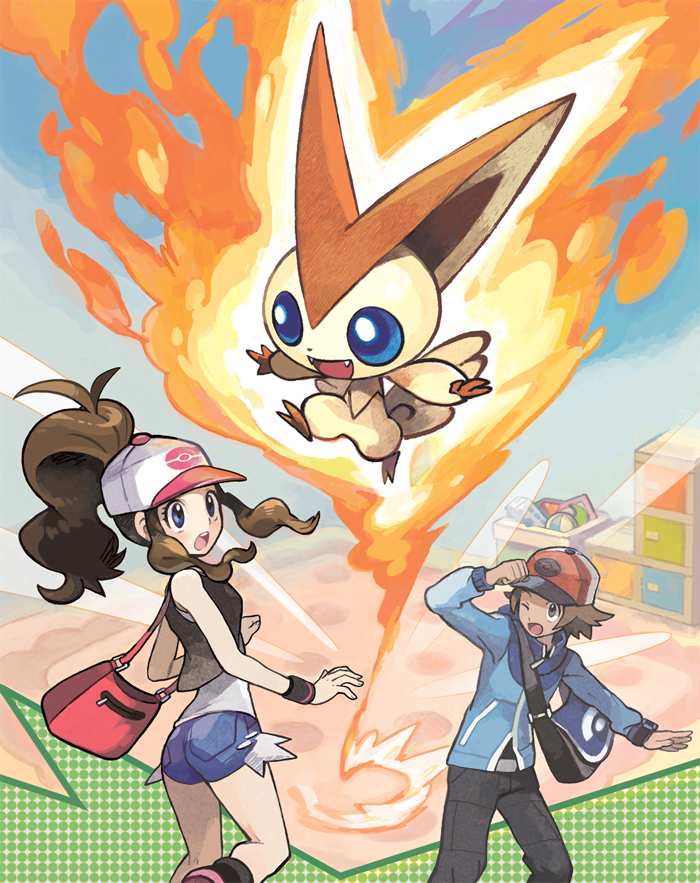 You make your way deeper into the lighthouse’s basement until you finally reach Victini’s room. Unlike the drab passage leading to it, however, the room itself has almost everything Victini would need for comfort and enjoyment. Upon an orange and yellow rug that adorably matches Victini’s color scheme lies some cushions, a bed, a pleasant potted plant, a trash can, a tall set of drawers, and a shorter stand with a framed photograph lovingly placed on top. On the wall above the bed is a poster of some kind—not a necessity, but that means it was intentionally given for Victini’s amusement. And off to the side of the room is a bench and even a toy box filled with blocks and a train. The descriptions you’ve heard up until this point were downright cruel, a rich person buying an island to store their rare Pokémon with the power to make others nigh-invincible, but the room tells a slightly different story. There is, at the very least, care and consideration put into the furnishings and trinkets that Victini has been surrounded with for the past two centuries.
You make your way deeper into the lighthouse’s basement until you finally reach Victini’s room. Unlike the drab passage leading to it, however, the room itself has almost everything Victini would need for comfort and enjoyment. Upon an orange and yellow rug that adorably matches Victini’s color scheme lies some cushions, a bed, a pleasant potted plant, a trash can, a tall set of drawers, and a shorter stand with a framed photograph lovingly placed on top. On the wall above the bed is a poster of some kind—not a necessity, but that means it was intentionally given for Victini’s amusement. And off to the side of the room is a bench and even a toy box filled with blocks and a train. The descriptions you’ve heard up until this point were downright cruel, a rich person buying an island to store their rare Pokémon with the power to make others nigh-invincible, but the room tells a slightly different story. There is, at the very least, care and consideration put into the furnishings and trinkets that Victini has been surrounded with for the past two centuries.
As is the norm for such special events, you’re given the opportunity to battle and capture Victini here. Once the battle is over, the police arrive to take away the members of Team Plasma. Accompanying them is Professor Juniper. She explains that “there was no end to the people who wanted to use Victini for their own evil ends…
“I’m sure the rich person who built this underground room for Victini was sincerely trying to help it,” she rationalizes. “But I think shutting the poor thing up in this room was a mistake.” Wonderfully spoken, as the situation is hardly so black or white. In opposition to the island’s name, Victini was imprisoned in Liberty Garden. And while there is some comfort in believing its prior owner wanted it to remain safe from harmful people and provided it with a cozy room, that doesn’t entirely excuse Victini’s confinement. Even people with good intentions may cause harm to Pokémon, sometimes when trying to protect them from humans with worse intent. Although Team Plasma was acting in their own self-interest, Victini did indeed deserve to be freed. The fact that players must reach Castelia before embarking on this event at all also means they have likely seen the scenario between Team Plasma and Bianca play out, adding extra context to this story. Team Plasma does not harm all the Pokémon they “liberate,” as shown with Bianca’s Munna, so there’s no guarantee that Team Plasma would have put Victini in danger themselves.
Professor Juniper continues: “I can’t believe it when people are led astray by Pokémon’s astounding abilities and try to misuse them… But it’s only when we face Pokémon with a good heart that we can make a brighter future!” In every Pokémon game, the player character is assumed to be “pure” and hosts a “good heart.” This allows them to meet with legendary Pokémon such as Ho-oh, Lugia, and Suicune in Gold, Silver, and Crystal, or to control them when others could not, such as with Groudon and Kyogre in Ruby and Sapphire. This inherent goodness now allows the player to capture Victini themselves without questioning the morality of moving Victini from one imprisonment—its room—into another—a Poké Ball either for use in battle or to sit in the PC. But you will still be left to ponder over the situation as a whole: was anyone really “right” in this situation? Either the person who locked away Victini, Team Plasma for trying to free it for themselves, or you? Inevitably, there will be times when there isn’t a clear “right” or “wrong” answer or outcome—things aren’t always so black or white.
You can leave now, but before you do, it’s in your best interest to speak to the hostages who have now been freed. The young lady says something you very likely already agree with: “Too many people use Pokémon for bad deeds!” Nearby, however, the man in sunglasses says something a lot more suspicious: “If I had known this island’s secret earlier, I would’ve… What? No! Nothing! Just talking to myself!” Although Pokémon games lump all people with bad intentions into the region’s evil organization, this man points out a way in which Team Plasma is right to want to separate people from Pokémon: bad people, in reality, exist everywhere, and will take advantage of such situations when given the opportunity. If it wasn’t Team Plasma who went after Victini, it would have been someone else—and there is no guarantee their intentions would be any better.
In the end, Victini’s event is another piece of supplemental narrative. It’s an incredible shame that it may be missed by players unable to obtain the proper event item. But the myriad ways it ties into Black and White’s themes makes it a phenomenal piece of Pokémon lore, and it makes Victini truly worthy of the title of “Mythical” Pokémon.
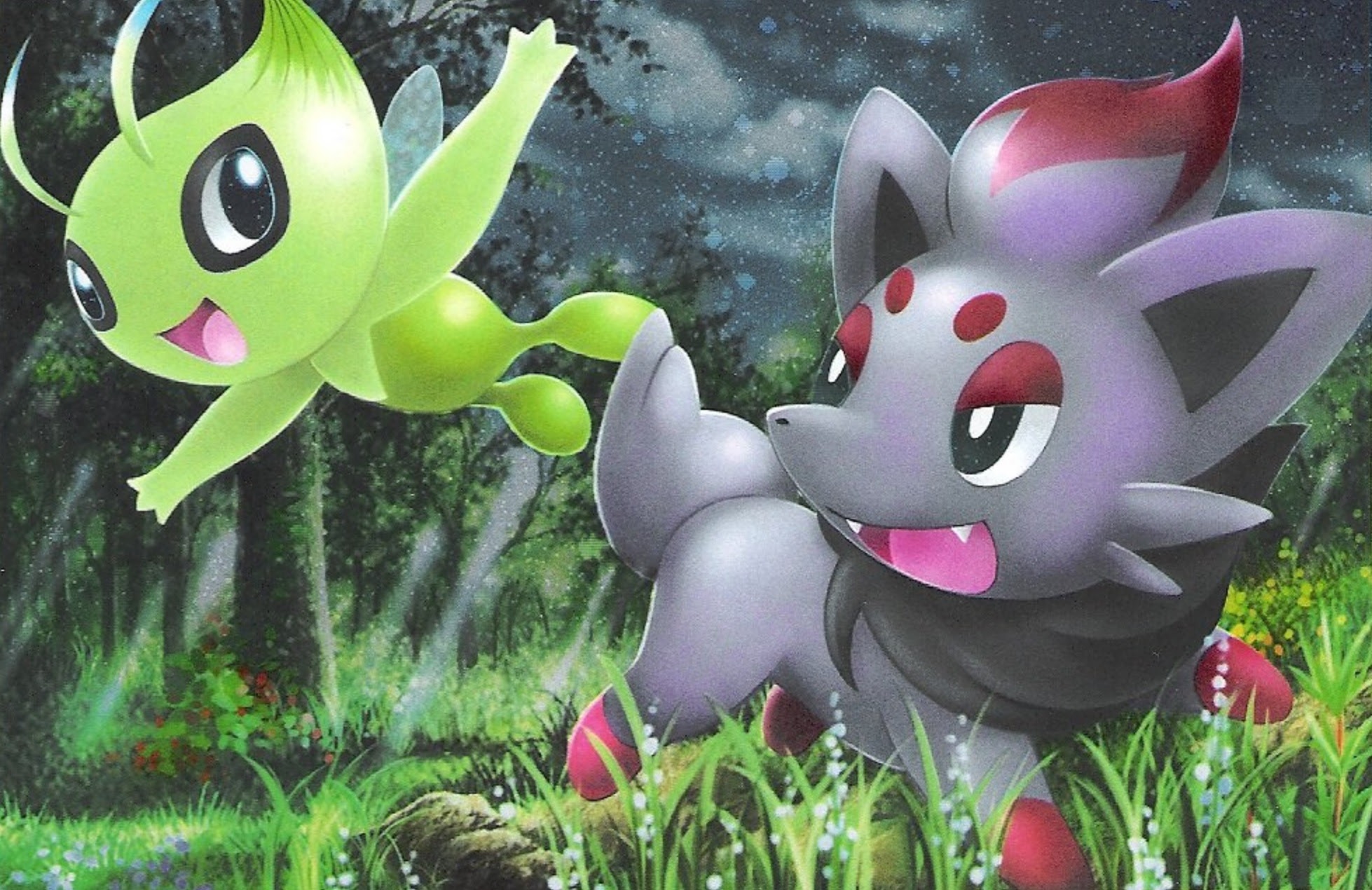
Something rather unique to Black and White is the existence of an additional, non-legendary event-exclusive Pokémon—or in this case, a family. Zorua and Zoroark aren’t obtainable through normal gameplay in Black and White, but because they aren’t legendaries, they can be seen for rudimentary Pokédex registration. In the Game Freak building in Castelia City, a young girl shows you and a nonverbal boy a picture of Zorua, adding it to your Pokédex as “seen.” If the player has a special event Celebi from HeartGold and SoulSilver the boy reveals himself to be a Zorua, and friends with the Celebi—a reference to the thirteenth Pokémon movie, Zoroark: Master of Illusions. The Zorua will join the player’s party at this point if they have an extra Poké Ball in their pockets.
Without access to the event Celebi to obtain Zorua and evolve it, players must wait a bit longer to register Zoroark in their Pokédex—until the end of the game, in fact, as Zoroark itself only appears in the final battle against N as a member of his team. But another event exists to provide players with a Zoroark in addition to the Zorua in Castelia City.
A Backpacker stands outside a camper in Lostlorn Forest and tells you that “there are people in the world with many different values. Some people enjoy things you might not think are fun… Having a lot of different values in the world makes it a richer place.” At that he takes his leave, but not without warning you that the woman who lives in the RV is different from himself: while the Backpacker values travel and meeting others, the woman in the RV prefers living in quiet solitude. And it’s true—the woman will never speak a word to the player.
 Unless, of course, the player has a special event-distributed Pokémon. If you bring a special event shiny Raikou, Entei, or Suicune to the camper, the woman will storm out of her RV, literally snarling. She attacks you and turns out to be a Zoroark. After defeating or capturing her, the Backpacker returns and explains that a Zoroark’s illusion can be incredibly powerful. Many elements of this part of the forest—including the RV and some of the surrounding trees—were just an illusion created by her, and upon this event’s end, these illusions fade away.
Unless, of course, the player has a special event-distributed Pokémon. If you bring a special event shiny Raikou, Entei, or Suicune to the camper, the woman will storm out of her RV, literally snarling. She attacks you and turns out to be a Zoroark. After defeating or capturing her, the Backpacker returns and explains that a Zoroark’s illusion can be incredibly powerful. Many elements of this part of the forest—including the RV and some of the surrounding trees—were just an illusion created by her, and upon this event’s end, these illusions fade away.
The female Zoroark, as well as the anger she holds towards the event Pokémon, are all in reference, again, to the movie Zoroark: Master of Illusions. But this miniature narrative contains more than just unique worldbuilding. The Backpacker’s wise words align with the underlying themes of Black and White, both about the nature of peoples’ differing opinions, and how what you see isn’t always as it seems. Not to mention the Zoroark’s distaste of people, wanting to be left alone and lashing out at the player, parallels the legend of Cobalion, Terrakion, and Virizion, Pokémon who prefer to be separate from humans.
Like all the previously mentioned events, this entire side quest is optional. Without the time-gated event Pokémon, players have no way of revealing the woman’s true form as a Zoroark. Black and White were the last time event-exclusive Pokémon unlocked side stories in the mainline Pokémon series, and it makes sense as to why: players who miss the events or want to replay old games from the start end up missing out on notable narrative segments. But regardless of how understandable the removal of this style of special event is, Black and White made sure to send it off with the fanfare such events warranted. The associated areas are free for the player to explore, further deepening Unova’s ties with their legendaries regardless of whether the player has them or not. But for the lucky ones who do, these Mythical Pokémon turn out to be far more than just glorified trophies collecting dust in your PC box.
